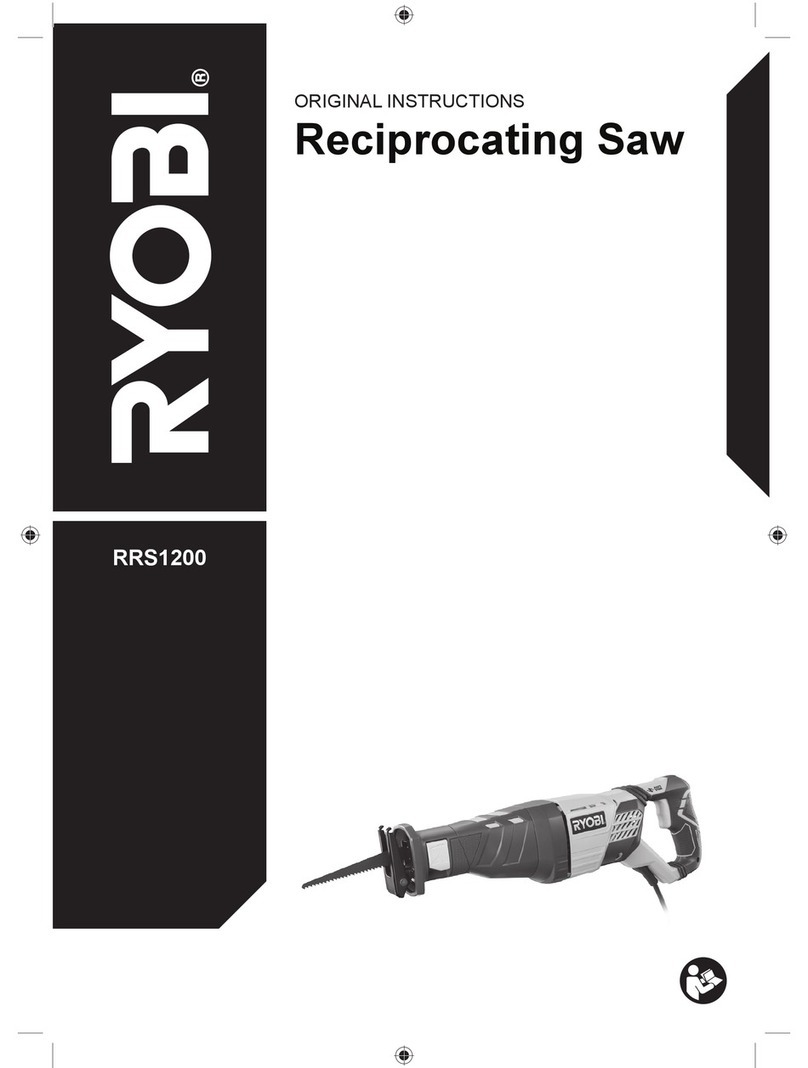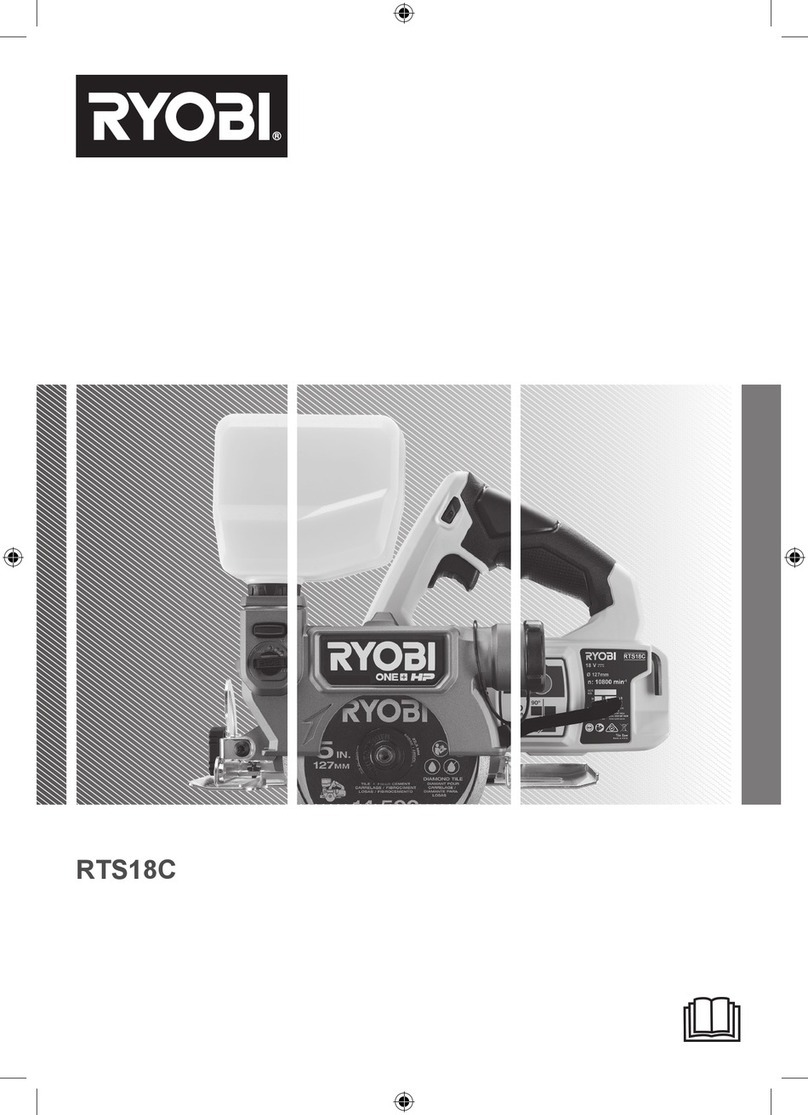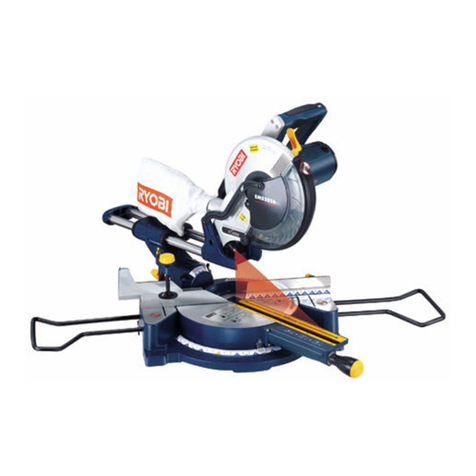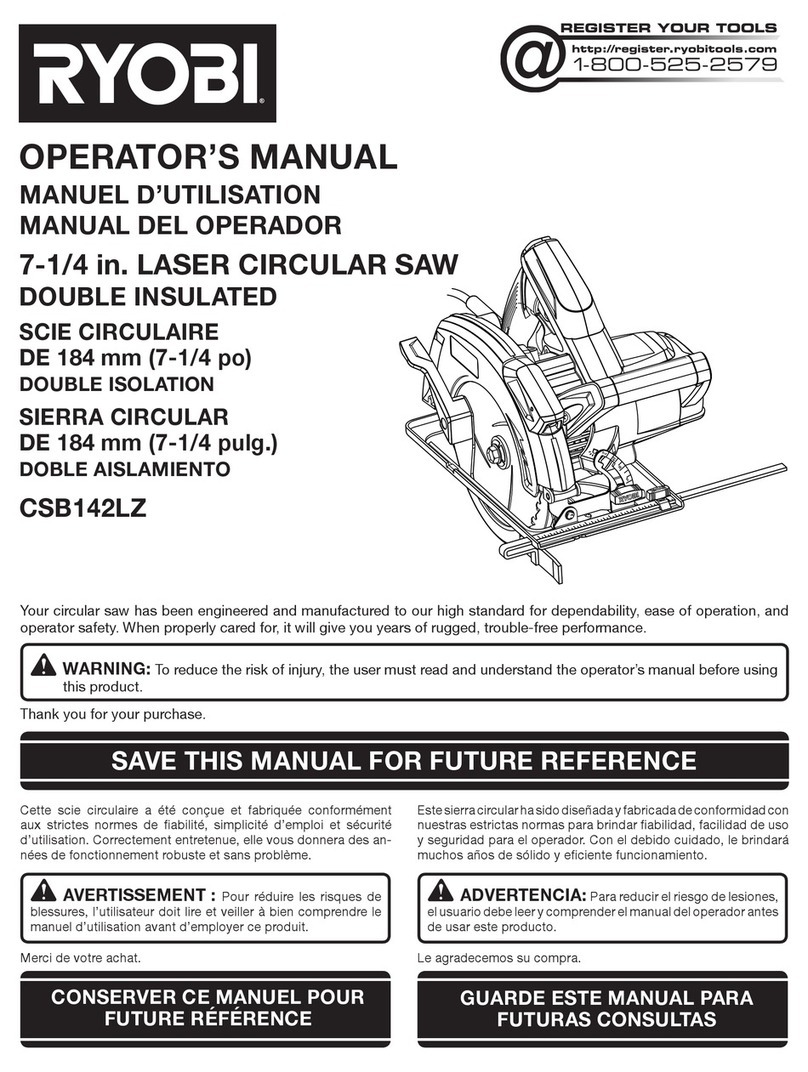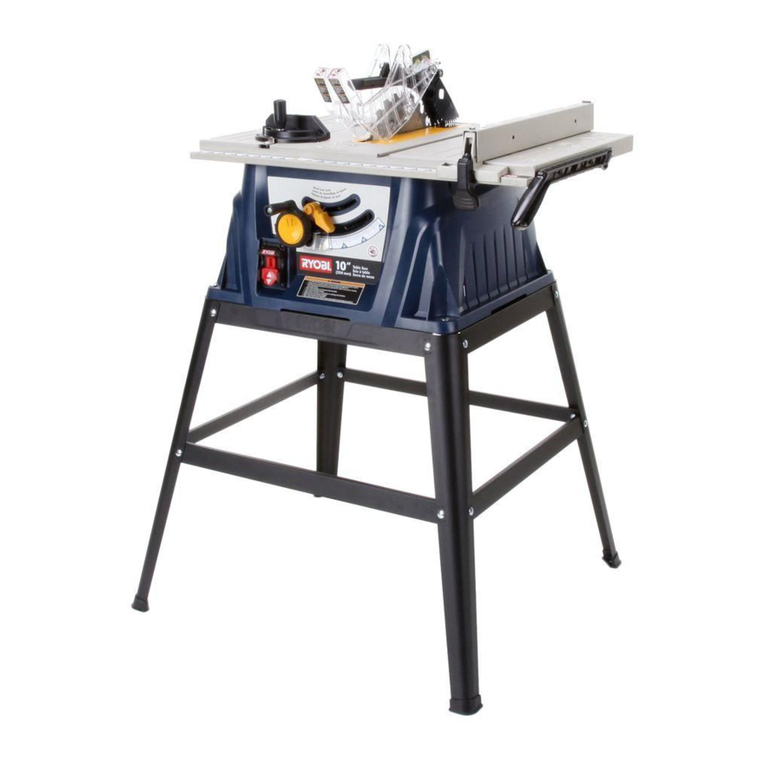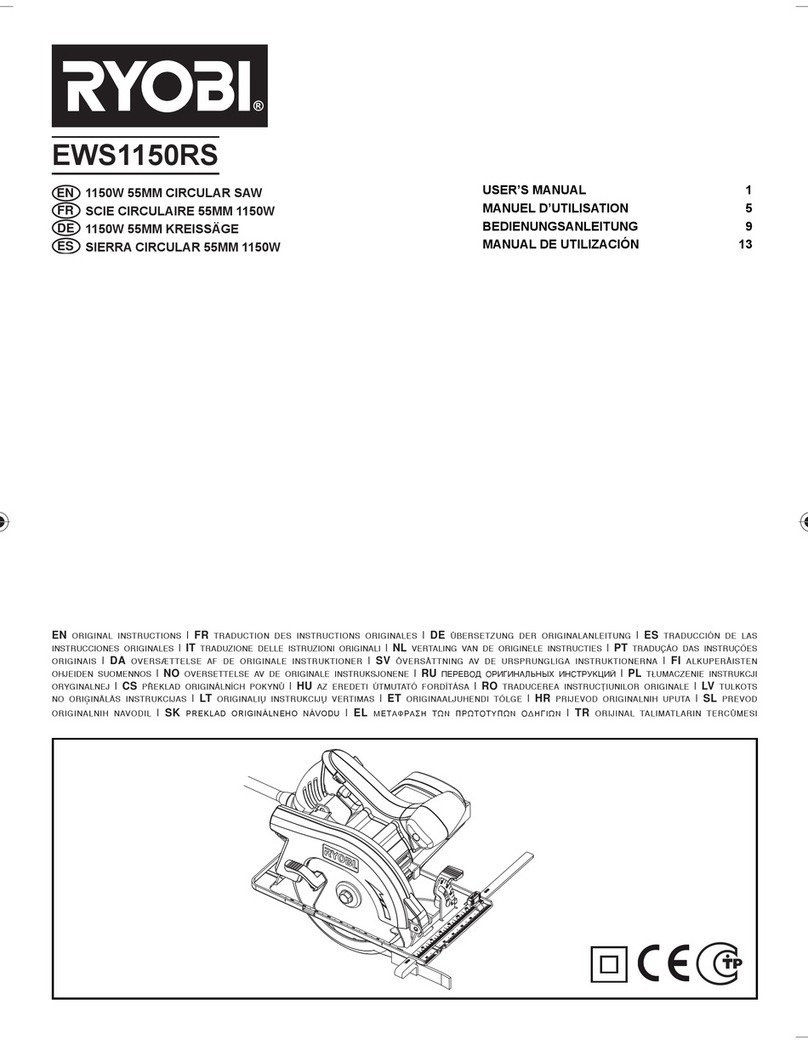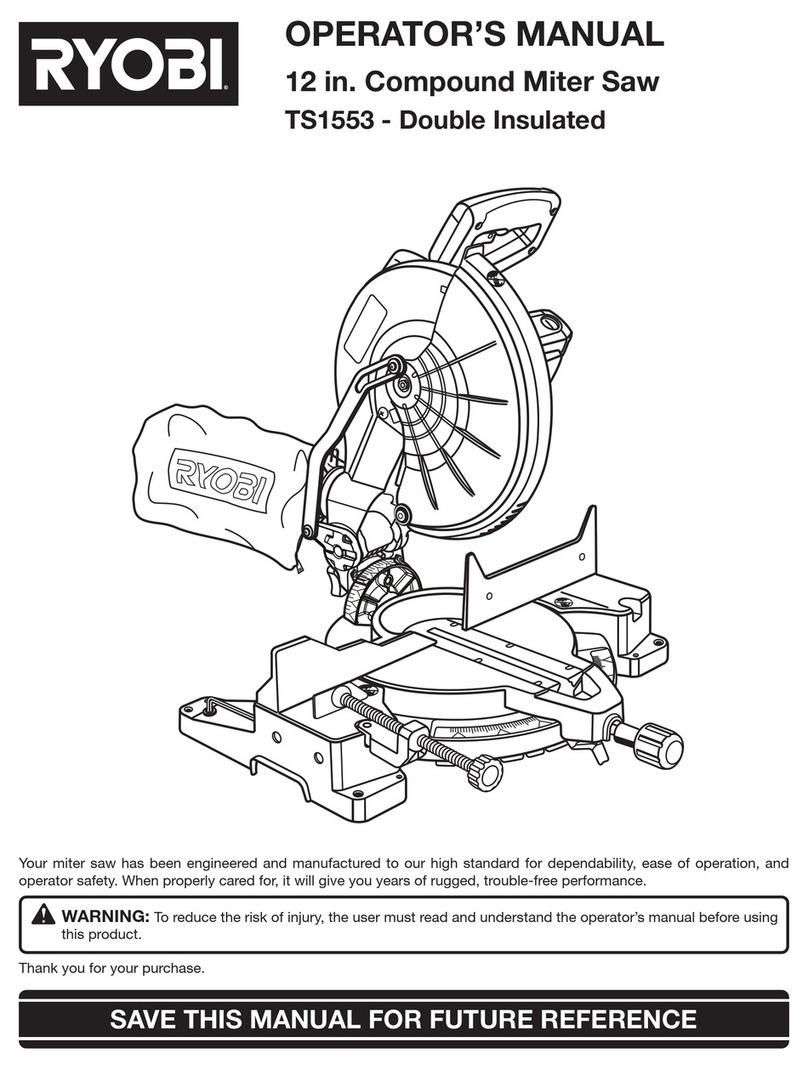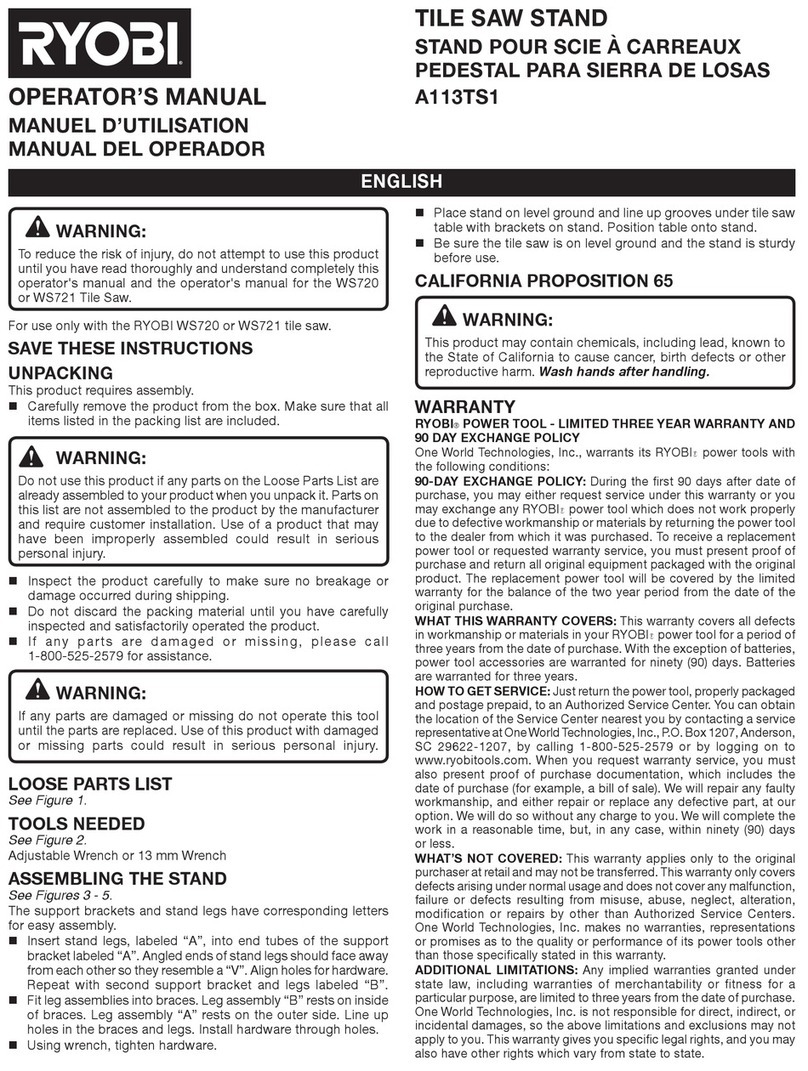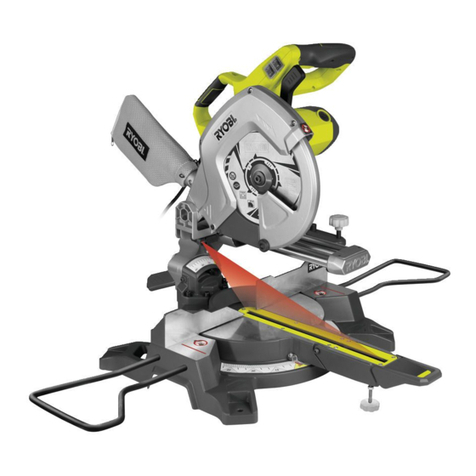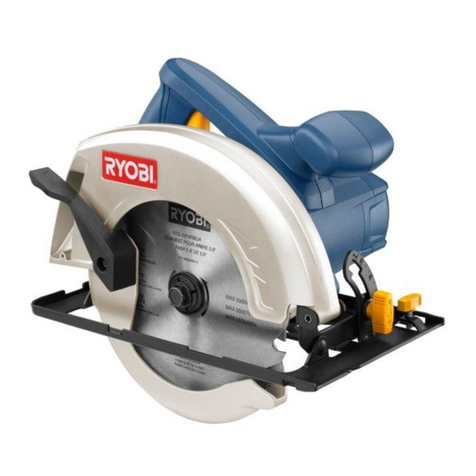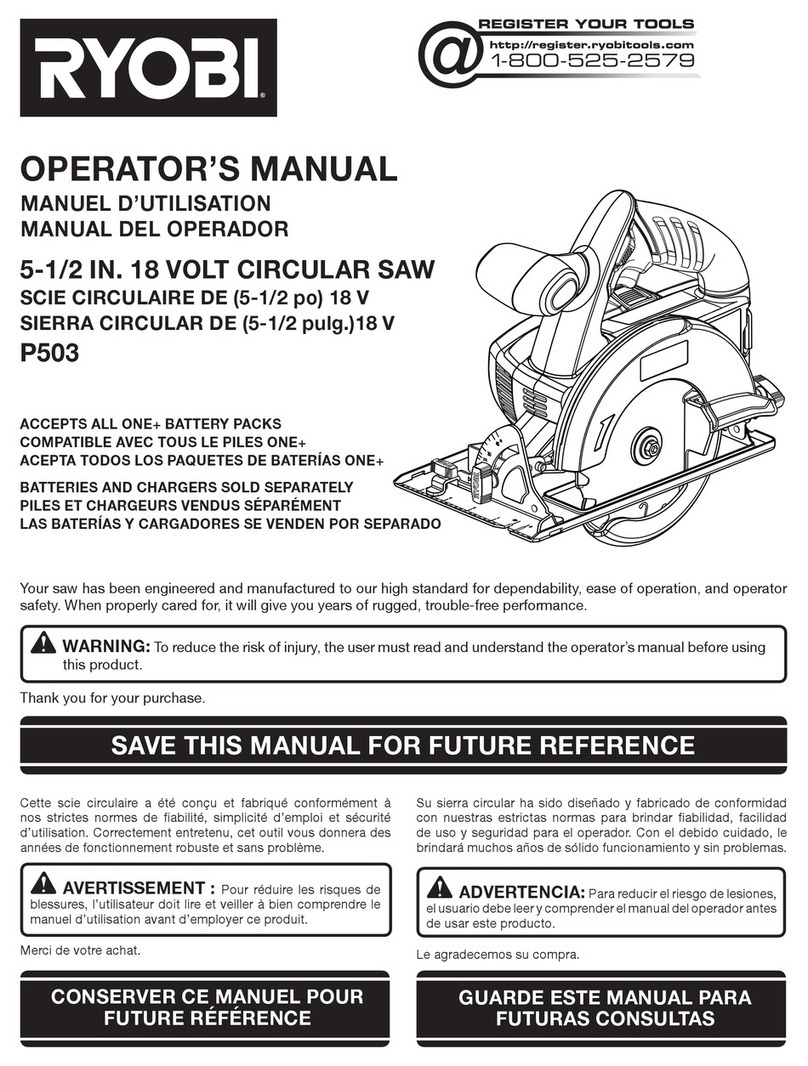Keep work area clear
Cluttered areas and benches invite injuries.
Consider work area environment
Do not expose tools to rain.
Do not use tools in damp or wet locations.
Keep work area well lit.
Do not use tools in the presence of flammable liquids or gases.
Guard against electric shock
Avoid body contact with earthed or grounded surfaces
(e.g. pipes, radiators, ranges, refrigerators).
Keep other persons away
Do not let persons, especially children, not involved in the
work touch the tool or the extension cord and keep them
away from the work area.
Store idle tools
When not in use, tools should be stored in a dry locked-
up place, out of reach of children.
Do not force the tool
It will do the job better and safer at the rate for which it was
intended.
Use the right tool
Do not force small tools to do the job of a heavy duty tool.
Do not use tools for purposes not intended; for example
do not use circular saws to cut tree limbs or logs.
Dress properly
Do not wear loose clothing or jewellery, they can be caught
in moving parts.
Non-skid footwear is recommended when working outdoors.
Wear protective hair covering to contain long hair.
Use protective equipment
Use safety glasses.
Use face or dust mask if working operations create dust.
Connect dust extraction equipment
The tool is provided for the connection of dust extraction
and collecting equipment, ensure these are connected and
properly used.
Do not abuse the cord
Never yank the cord to disconnect it form the socket. Keep
the cord away from heat, oil and sharp edges.
Secure work
Where possible use clamps or a vice to hold the work. It
is safer than using your hand.
Do not overreach
Keep proper footing and balance at all times.
Maintain tools with care
Keep cutting tools sharp and clean for better and safer
performance.
Follow instruction for lubricating and changing accessories.
Inspect tool cords periodically and if damaged have them
repaired by an authorised service facility.
Inspect extension cords periodically and replace if damaged.
Keep handles dry, clean and free from oil and grease.
Disconnect tools
When not in use, before servicing and when changing
accessories such as blades, bits and cutters, disconnect
tools from the power supply.
.
Remove adjusting keys and wrenches
Form the habit of checking to see that keys and adjusting
wrenches are removed from the tool before turning it on.
Avoid unintentional starting
Ensure switch is in off position when plugging in.
Use outdoor extension leads
When the tool is used outdoors, use only extension cords
intended for outdoor use and so marked.
Stay alert
Watch what you are doing, use common sense and do not
operate the tool when you are tired.
Check damaged parts
Before using the tool, it should be carefully checked to determine
that it will operate properly and perform its intended
function.
Check for alignment of moving parts, binding of moving parts,
breakage of parts, mounting and any other conditions that
may affect its operation.
A guard or other part that is damaged should be properly
repaired or replaced by an authorised service centre unless
otherwise indicated in this instruction manual.
Have defective switches replaced by an authorised service
centre.
Do not use the tool if the switch does not turn on and off.
WARNING:
The use of any accessory or attachment other than one
recommended in this instruction manual may present a risk
of personal injury.
Have your tool repaired by a qualified person
This tool complies with the relevant safety regulations.
Repairs should only be carried out by qualified persons using
original spare parts, otherwise this may result in considerable
danger to the user.
Do not use saw blades which are damaged or deformed;
Replace the table insert when worn;
Connect band saw to a dust-collecting device when sawing
wood;
Do not operate the machine when the door or guard protecting
the saw blade is open;
Take care that the selection of the saw blade matches the
material to be cut;
Do not clean the saw blade whilst it is in motion;
Wear suitable personal protective equipment, when necessary,
this could include;
Hearing protection to reduce the risk of induced hearing loss,
Respiratory protection to reduce the risk of inhalation of
harmful dust,
Gloves for handling the saw blade and rough material.
Maintenance and servicing
The operators instructions in factors influencing exposure
to noise (e.g. material to be supported to reduce the emitted
noise, selected saw blade);
Correct adjustment and regular maintenance of the saw blade
and band wheel cleaning equipment and of lubrication system.


